#Cascadia Carbon
Text
Red Shed Tree Sales and Seasonal Boutique
At 10 a.m., on November 24th, Red Shed Christmas Trees reopened their seasonal Montavillage location in the Vinje & Son’s parking lot near SE 78th Avenue and Washington Street. Shoppers will find a wide selection of Douglas, Nordmann, Grand, and Noble Fir trees ranging from 2 to 15 feet tall. Wreaths and garlands are just some of the extended holiday decorations offered at this outdoor sales lot.…
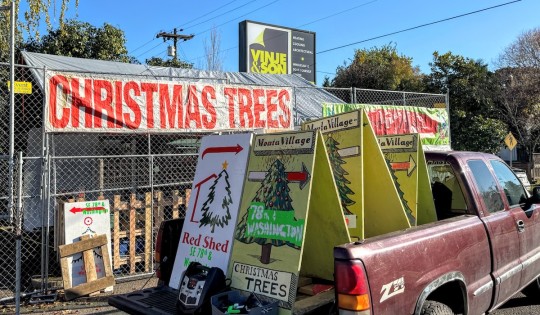
View On WordPress
#Alex Wick#Cascadia Carbon#Cascadia Carbon Alex Wick#Flipside Hats#Greg Smith#Hannah Miller#Janie Janssen#Lesle Janssen#Montavilla Brew Works#Peter McNamee#Red Shed Christmas Trees#Shane Reaney Studios#Waxing & Raining Handmade Goods
0 notes
Text
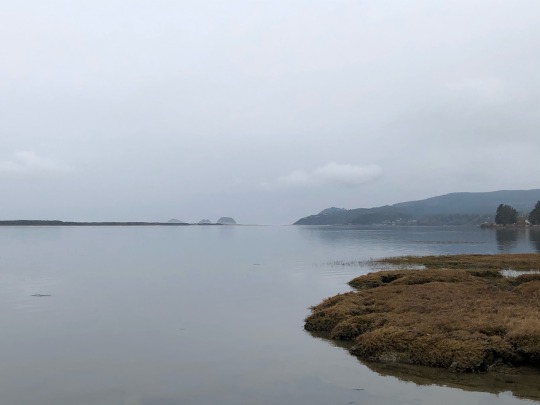
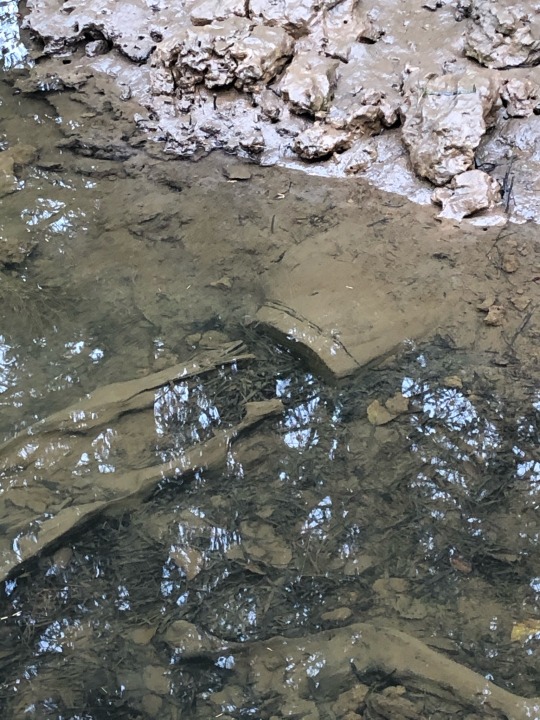

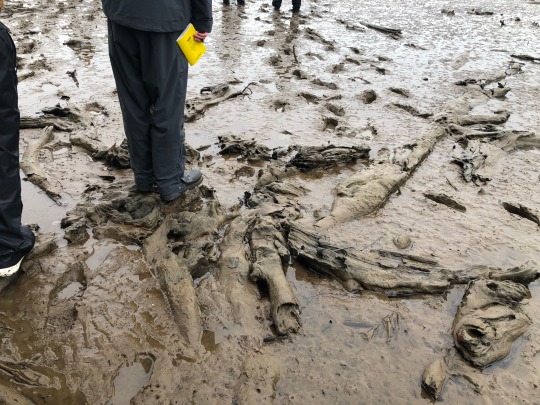
Netarts Bay is home to one of the finest estuaries in Oregon; a rich ecosystem of oysterbeds and coastal marshes. However, it conceals evidence of the last great earthquake in the Northwest. 320 years ago, on January 26, 1700, the Cascadia Subduction Zone ruptured along its full length, sending a colossal tsunami onto the Oregon Coast and across the Pacific to Japan. The tsunami is recorded in Oregon as a layer of sand amidst mudflat deposits. Here, 7 tsunami layers are recorded, showing earthquakes back over 2,000 years.
Also, a ghost forest is present. Stumps of ash and fir trees are preserved under water and in the mud that have been carbon dated to around 1000AD. These trees were killed by a tsunami event which saturated them in salt water. The earthquakes cause the coast to subside by about 1 meter, into the water, and the slow tectonic action between earthquakes slowly raises it back above the water.
I've been back a number of times since these pictures were taken, and when the data is all published I'll talk more freely about it.
#oregon geology#cascadia#geology#marine geology#ghost forest#netarts#oregon coast#paleoseismology#field work
90 notes
·
View notes
Text
Ea, Our Second Chance (2d)
2d. Ea: the human presence
(> Back to 2c. Life on the planet
> On to 3. South of Dagon)
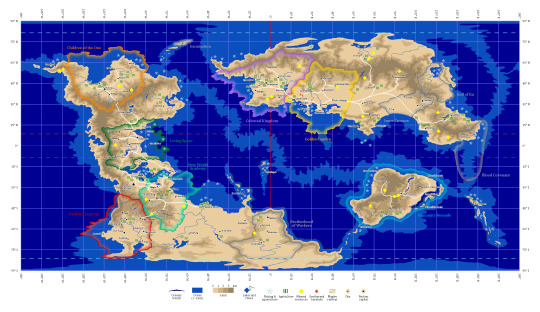
(full image)
« We were born into a broken world. If our existence has a purpose, it is to fix it. » – "Gene Taylor", Hypertopian Manifesto, incipit
« ... The closer you come to true freedom of association, the closer you get to a world where everyone is a member of more or less the community they deserve. That would be a pretty unprecedented bit of progress. » – Scott Alexander, Archipelago and Atomic Communitarianism, 2014
Humanity came to Ea a little over three centuries ago. The Ark left Earth sometime around 2070 CE, carrying ten thousand cryopreserved people that roughly reflected the variety of the human species, vast electronic archives detailing millennia of history and culture, compact industrial machinery, frozen seeds and embryos of hundreds of plant and animal species, and most importantly tools to measure planetary habitability (gravity, surface temperature, atmospheric composition, distance from star) from light years afar, and a limited AI to judge what world held the best chances for humanity.
The mission didn't quite work how it was meant to. Nobody knows exactly how far the Ark traveled, or or how long; and, as far as they can tell, no message was ever sent to or from Earth. Nevertheless, the passengers survived. The Ark placed itself in Ea's low orbit, and thawed its human cargo. 100 landing pods reached the surface a few hundred km south of the Dagon Sea, while the bulk of the starship was left orbiting the planet.
Ea is cold and dry, its winter incredibly long and harsh, its summer brief but sweltering; the atmosphere is choked with toxic amounts of carbon dioxide, from which both biospheres nevertheless depend for survival; there are no convenient deposits of fossil fuels; and native life is unfamiliar and often dangerous. The first generation of colonists suffered terribly, but eventually they learned both to adapt themselves to Ea, and to adapt Ea to them.
When population started to grow and material prosperity to rise, disagreements arose on how to organize their young society. Many resorted to violence to extract resources from their neighbors or to impose their ideals on them; warlords and tyrants arose as the authority of the Mission Commanders declined. Disruption to Ea's biosphere spiraled out of control, as plants from Earth throve uncontrolled in the abundance of carbon, and humans drilled boreholes through the crust or blasted apart the icecaps in the attempt to prevent temperatures from falling.
Still, in the end, a stable order took shape. People scattered on all the planet setting up whatever form of society they preferred, as free as possible from each other's interference, each trying to relate itself to Ea in a different way. The greatest powers (in the colored borders) are united in the Sevenfold Pact, in which they pledge to respect all others' independence, and to allow every citizen to move to the society of their choice unimpeded. Smaller nations (in grey in the map) have arisen elsewhere, enjoying the same autonomy, though they are not members of the Pact. In the spaces inbetween, dozens of smaller communities host people united by common culture, religion, or ethnicity.
(List of named polities under the cut)
SEAT OF THE METAGOVERNMENT: the central seat of the Sevenfold Pact.
Landing Point (this is, of course, the point where the landing pods first reached Ea's surface).
THE SEVEN SIGNATORIES: the powers that ended the Planetary War by creating the Pact.
Children of the One: Olduvai*, Amma, Imani, Laetoli, Maisha, Mizizi, Selam, Toumai, Upendo, Uzuri
Living Spore: Galapagos*, Cascadia, Coenobium, Guanacaste, Jannah, Karisoke, Pachamama, Vernadsky, Virunga, Volvox
New World Academy: High Court*, Chagas, Galileo, Lavoisier, Leeuwenhoek, Ockham, Pavlov, Ramanujan, Tsiolkovsky, Wegener
Pandava Legions: Fort Vajra*, Arrowhead, Camp Glacier, Camp Thunder, Deepford, Freehold, High Clearing, Redfield, Thornwood, Whitestone
Humanity Remade: Prime Node*, Breath of Dawn, Embrace of Kindness, Glow of Aurora, Hope of Humanity, Nest of Warmth, Peace of Mind, Scent of Water, Song of Bliss, Voice of Flower
Golden Garden: Penglai*, AtlasCorp, Helios Energy, InterChem, Luxor, Kuznetsov, NeuralArts, Qian&Gupta, StarSeeker, WeltraumStahl
Celestial Kingdom: Montsalvat*, Axum, Babylon, Byzantium, Carcassonne, Djenne, Mediolanum, Palmyra, Shambhala, Shangdu
LESSER POWERS: other important polities with less global influence.
Brotherhood of Workers: Phalansterium*, Beccaria, Kulischov, Kropotkin
Blood Covenant: (none)
Soil of Ea: (none)
Inner Cosmos: Tharmas*, Los, Luva, Urizen
Incarnation: Self*
EXCLAVES: autonomous city-states founded on different principles.
Ethno-cultural: Babatunde [Yoruba], Beaufjord [Scandinavian and Canadian], Civitanova [Mediterranean], Gandhara [Indian], Gokturk [Turkic], Joseon [Korean], Hanunah [Pan-American], Sama Orang [Malay], Shin'yamato [Japanese], Svoboda [Slavic], Tianhua [Chinese], Vrijburg [Germanic]
Religious: Beit haShlishi [Orthodox Jewish], Bodhisvaha [Buddhist], Devanagara [Hindu], Faluncheng [Falun Gong], Makka al-Jadida [Sunni], New Zion [Mormon]
Experimental: Aryavarta [Proto-Indo-European reconstructionism], Kallipolis [Plato's Republic], Panopticon [self-explanatory], Port Royal [egoist anarchism], Shulamith [female separatism]
* = national capital
#speculative biology#exobiology#future history#alien planet#speculative culture#my work#ea our second chance
5 notes
·
View notes
Text
Gearing Up for Greatness: The Leading Heavy Duty Truck Brands
Gearing Up for Greatness: The Leading Heavy Duty Truck Brands
In the world of heavy-duty transportation, reliability, power, and durability are paramount. Heavy-duty trucks are the unsung heroes of industries ranging from construction to logistics, carrying massive loads and enduring grueling conditions day in and day out. When it comes to heavy-duty truck brands, a select few have risen to the top, earning their reputation for excellence through decades of innovation and unwavering commitment to quality. In this article, we'll take a closer look at the leading heavy-duty truck brands that have stood the test of time and continue to gear up for greatness.
Volvo Trucks
Volvo Trucks is a name synonymous with quality and innovation in the heavy-duty truck industry. With a rich history dating back to 1928, Volvo has consistently pushed the boundaries of what is possible in heavy-duty truck design. Their trucks are known for their robust construction, fuel efficiency, and cutting-edge safety features.
One of Volvo's standout models is the Volvo VNL series, which offers a range of options to meet the diverse needs of heavy-duty truck operators. These trucks come equipped with advanced driver assistance systems, making them some of the safest vehicles on the road. Additionally, Volvo's commitment to sustainability is evident in their electric and hybrid models, contributing to a greener future for the heavy-duty trucking industry.
Freightliner
Freightliner, a division of Daimler Trucks North America, is another heavyweight in the heavy-duty truck market. Since its founding in 1942, Freightliner has earned a reputation for producing rugged and reliable trucks that can handle the toughest jobs.
One of their standout models is the Freightliner Cascadia, which combines aerodynamic design with cutting-edge technology to optimize fuel efficiency. This not only reduces operating costs for trucking companies but also contributes to a reduction in carbon emissions. Freightliner's commitment to sustainability extends to their electric trucks, making them a key player in the transition to cleaner transportation solutions.
Kenworth
Kenworth, a subsidiary of PACCAR Inc., has been building heavy-duty trucks since 1923. The Kenworth name is synonymous with premium quality and performance. Kenworth trucks are known for their distinctive design, durability, and customization options, allowing customers to tailor their trucks to their specific needs.
The Kenworth W900 is an iconic model that has become a symbol of American trucking. Known for its classic appearance and powerful engines, the W900 is a favorite among long-haul truckers. Kenworth's commitment to environmental sustainability is evident in their line of natural gas-powered trucks, which offer a cleaner alternative to diesel.
Mack Trucks
Mack Trucks, founded in 1900, boasts a long and storied history in the heavy-duty truck industry. They are known for producing trucks that are built to last and excel in challenging conditions. Mack trucks are often recognized by their bulldog hood ornament, a symbol of their rugged and tenacious nature.
The Mack Anthem is one of their standout models, featuring an aerodynamic design and advanced safety features. Mack Trucks has also been a pioneer in developing alternative fuel options, including natural gas and electric models. This commitment to sustainability aligns with the broader industry goal of reducing the carbon footprint of heavy-duty transportation.
Peterbilt
Peterbilt, a subsidiary of PACCAR Inc., has been a leading player in the heavy-duty truck market since 1939. They are renowned for their commitment to craftsmanship and attention to detail. Peterbilt trucks are known for their distinctive styling, reliability, and advanced technology.
The Peterbilt 389 is a flagship model that embodies the brand's commitment to quality and performance. It offers a range of engine options to suit different applications and is highly customizable to meet the specific needs of customers. Peterbilt has also ventured into electric truck production, reflecting the industry's growing focus on sustainability.
International Trucks
International Trucks, a brand under the Navistar umbrella, has a history dating back to 1902. They have earned a reputation for producing trucks that are rugged and dependable. International trucks are designed to meet the demands of a wide range of industries, from construction to long-haul transportation.
The International LT Series is a standout model known for its fuel efficiency and driver comfort. It incorporates advanced technology to optimize performance and reduce emissions. International Trucks has also explored electric and hybrid options, contributing to the industry's efforts to embrace cleaner energy sources.
In conclusion, heavy-duty truck brands play a vital role in powering industries and economies around the world. The leading brands mentioned in this article have not only established themselves as industry giants but have also demonstrated their commitment to innovation and sustainability. As the heavy-duty trucking industry continues to evolve, these brands will undoubtedly remain at the forefront, gearing up for greatness and shaping the future of transportation. Whether it's Volvo's safety innovations, Freightliner's fuel efficiency, Kenworth's customization options, Mack's durability, Peterbilt's craftsmanship, or International's versatility, these brands are driving the heavy-duty trucking industry towards a brighter and more sustainable future.
1 note
·
View note
Link
Check out this listing I just added to my Poshmark closet: Brooks Cascadia 11 Trail Running Shoes 9.5B.
0 notes
Text

Week of Thought Provoking Questions
Cascadia Stack, how do you, as a company, feel about Capitalism?
During the Bernie Sanders)Elizabeth Warren days of bliss, when we were all hopeful for the change we want to see (who is this partial quote referring to? I will give you 2 carbon tax credits if you are correct, down in the comments, please).... My thoughts then have waivered about capitalism through my college years. Then during my Bernie period, I hated, no, Hated capitalism. But, then it was my Fox-News-watching mother in Texas that reminded me that what I should rather feel is that I hate "extreme capitalists".
Stack has applied for fiscal sponsorship
I will find out in the next 2-4 weeks if I will be invited into this awesome family of wonderful projects doing really good work out there. The point is that making the decision to switch from a for-profit company to a non-profit was an act of "letting go". Because the work we do in the Bioregion or Eco-region as some may argue, is the work for the people but also by the people. It is the people who live laugh and love here that will bring resilience to the land that we all love and honor.
Stack is submitting a grant proposal for $985.
It is a national grant so the competition will be huge. They have several awards to give so I am hopeful.
Once we achieve fiscal sponsorship then we are a 501c3 by proxy and can begin fundraising.
Thx 4 reading. Also, don't forget to put your guess as to who my quote was referencing in the comments to get your 2 carbon tax credits. (More on that later.)
#entrepreneur#capitalism#socialism#bernie sanders#elizabeth warren#2016 election#climate adaptation#resilience#social entrepreneur#startup#grant writing#grant proposal#fiscalsponsorship#501c3#fundraising#extreme capitalists
0 notes
Photo

In this photograph, taken April 8, 2016, scientists Joth Davis, left, and Brian Allen of the Puget Sound Restoration Fund hold kelp that naturally grew on a buoy line in Washington's Hood Canal. An experiment will test whether a seaweed farm can take up carbon dioxide from surrounding waters to combat ocean acidification. (AP Photo/Manuel Valdes)
Could a seaweed revolution help solve the hunger crisis?
Offshore from Vancouver Island, B.C., a team hauls up a line laden with meter-long fronds of sugar kelp (Saccharina latissima), a floppy brown seaweed with crinkled edges. The harvest from Cascadia Seaweed, a kelp farming company founded in 2019, has over the years made its way into a seaweed-enriched “sea spice” condiment mix and a host of trial snack products including protein puffs and tortilla chips. Now the company is focused on processing its seaweed into animal feed and soil additives — anything that will help kelp make the world a better place.
But.... and this has been my concern for some time...
Ecosystem impacts can be complicated. A dense kelp forest, say, in a spot where one did not previously exist can affect the light and nutrients in the surrounding water — not necessarily for the better. Kelp could in theory shade out other organisms below, for example. Intentionally growing huge quantities of seaweed in a massive global scale-up could have far-reaching negative impacts on ocean chemistry and the food chain. And growing large quantities of a single crop could raise the specter of monoculture problems — on land, monocultures pursued for high profit margins have notoriously proven problematic for biodiversity and resistance against extreme weather or disease.
One of the most intuitive concerns about seaweed farming revolves around the risks presented by foreign imports. In Hawaii, for example, an Asian red seaweed was brought in for aquaculture in the 1970s; it has since spread several kilometers from where it was introduced, with escapees smothering some coral reefs. Likewise in the Philippines, says Doumeizel, the use of foreign farm spores (called seed by the industry) drove down local seaweeds. “They did everything we would not do today,” says Doumeizel. “They took a seaweed that was not native and grew it as fast as they could.”
0 notes
Text
Saw an enlightening video on Heat Pumps.
It sparked a discussion that needed to get started sooner rather than later because of the age of my parents' house and particularly the HVAC system when it was replaced, and future-proofing the system against rising energy costs and reducing our Carbon footprint.
My primary concern is that because of the location of the natural gas fired furnace and the size of the ducts going from there to the sleeping rooms, those rooms aren't getting the heating/cooling they need. Based on this new information, a mini-split Heat Pump system feeding 3 heads exclusively in that part of the house could solve that problem quite nicely.
But that's one idea.
The other is that our current furnace has an A/C hood that currently isn't being used (because it historically wasn't strictly necessary to have air conditioning here in Cascadia, and we don't have central air, with no plans in place to upgrade) and because the unit is 14 years old as of this writing, the unit may die before we suck it up and upgrade it.
But I digress. I feel like it would be more comfortable as a compromise to put the heat pump heads in the sleeping rooms and let the furnace and the little in-window A/C unit handle the main living space.
0 notes
Text
List of Fears:
The Cascadia Earthquake
Carbon Monoxide Poisoning
Rabies
0 notes
Link
6 notes
·
View notes
Text
President Trump Delivers Remarks to NASA SpaceX Group After Successful Launch – 5:00pm ET Livestream…
President Trump Delivers Remarks to NASA SpaceX Group After Successful Launch – 5:00pm ET Livestream…
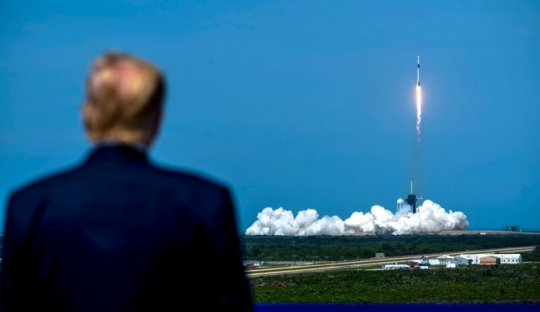
Posted originally on The Conservative Tree House on May 30, 2020 by sundance
After the successful manned launch of the NASA SpaceX mission to the International Space Station President Trump is scheduled to deliver remarks to the audience at Kennedy Space Center in Cape Canaveral, Florida. Anticipated start time 5:00pm ET.
UPDATE: Video and Transcript Added
[youtube=https://www.youtube.com/watch…
View On WordPress
#A4#AI#AI Anchor#AI Computers#Artificial Intelligence#Astronomy#Blue Origin#BMW ZF&039;s 8-Speed Auto transmission#Bremsstrahlung#Carbon base life#Cascadia Subduction Zone#Cern#Chemistry#Chernobyl#Complexity#computer viruses#Computers#Constructive interference#Copenhagen interpretation#Crew Dragon#Crew Dragoon#CSZ#Dark Energy#Dark matter#Destructive interference#DNA#Drones#E8 Lattice#earthquakes#Eclipse
0 notes
Photo

Our team on the R/V Western Flyer studying the Cascadia Subduction Zone found that there's more than mud on this deep seafloor! 👀
Here's a chance to learn about these deep-sea unicellular superstars—xenophyophores. Xenophyophores are a type of foraminifera often found littering the seafloor in areas of high carbon flux, like the submarine canyon in the Cascadia Subduction Zone.

Although they are technically single-celled organisms (which we might normally expect to be too small to see with the naked eye), xenophyophores make brain-looking agglutinated tests out of cemented calcium carbonate and other sediments. Beyond looking cool, these critters act as "ecosystem engineers," increasing biodiversity by creating additional habitat for deep-sea organisms.
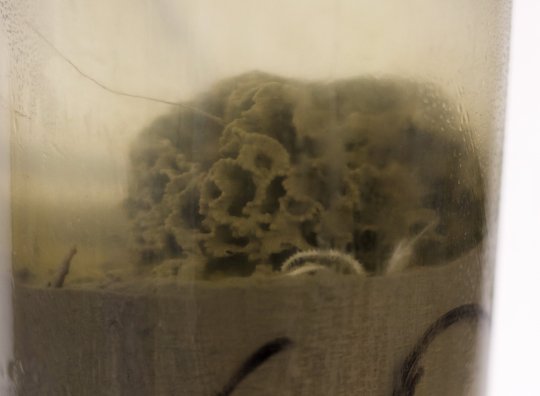
43 notes
·
View notes
Link
Check out this listing I just added to my Poshmark closet: Brooks Cascadia 9 Trail-Running Shoes 12.
0 notes
Text
On Vancouver Island, seaweed is abundant, diverse, useful, and symbolic. Indigenous peoples have used it for centuries for food preparation, fishing, and as a cultural and spiritual touchstone. On the island’s southwest coast, Dr. Louis Druehl started farming and researching kelp in the late 1970s and says he has dedicated his life to it “and loved every minute.” He mentored seaweed farmer Kristina Long, who now grows bull kelp over about 40 acres, and harvester Amanda Swinimer, who wades out into waist-deep water at low tide to carefully hand-cut blades of winged kelp in just the right spot to ensure regrowth.
These tiny operations barely create ripples within the vast coastal landscape, but kelp—here and elsewhere in North America—is at a crossroads.
In recent years, seaweed has been promoted around the globe as an overlooked, multifaceted climate solution: a sustainable food and biofuel source, a feed that reduces methane emissions from cattle, and a tool with the potential to absorb massive quantities of carbon from the atmosphere (although much more research is needed to determine how farms might actually contribute to sequestration). As a result, companies looking to capitalize on those promises are turning up in far-flung coastal communities with big plans.
Take Cascadia Seaweed. The company arrived on Vancouver Island soon after it was founded in 2019, and set a goal to farm 1,200 acres of the ocean there by 2025; its larger “stretch goal” is over 6,000 acre. In Alaska, Seagrove Kelp Co. has 127 acres in operation and 700 in the permitting phase. And in Maine, the continent’s seaweed-farming hub, Running Tide’s vision involves millions of biodegradable buoys attached to lines of kelp offshore.
Many see the movement toward larger operations as exciting evidence of progress. “We have all these global problems and no solutions on land. Seaweed is the greatest untapped resource that we have,” said Vincent Doumeizel, the food program director at the innovation-focused charity Lloyd’s Register Foundation. Doumeizel co-authored The Seaweed Manifesto in 2020 to draw attention to how scaling up the industry outside of Asia, where 99 percent of the world’s seaweed is already grown, can accelerate progress on multiple United Nations Sustainable Development Goals.
At the same time, seaweed farmers, harvesters, and advocates in British Columbia, Maine, and elsewhere are concerned. They say that as companies with no experience in their coastal ecosystems or the complexities of farming kelp go big and move fast, the industry risks replicating the early mistakes of finfish aquaculture, which resulted in a number of environmental disasters. To prevent repeating historic mistakes, they are fighting to establish local rules regarding issues such as farm size and location, native seaweed genetics, and permit ownership.
In 2021, advocates in Maine created the Seaweed Commons to create networks of small-scale ecological harvesters and farmers that could share information and resources; they also conducted a panel at a Slow Fish conference called “Gardens or Monocultures? Seaweed Cultivation at the Crossroads.” In March, Lloyd’s Register Foundation also launched the Safe Seaweed Coalition to fill in gaps in food, environmental, and operational regulations around the world.
“I’m absolutely thrilled that seaweed is coming into people’s consciousness and awareness . . . as an absolutely critical component of global climate and global health and the health of the oceans,” said Amanda Swinimer. “The part that concerns me is that a lot of people are seeing dollar signs. It’s being said that kelp farming is going to save the planet from climate change. Well, wild kelp is already saving us from worse climate change, and if we mess with that, we’re gonna be in big trouble.”
[Continue Reading]
7 notes
·
View notes
Photo
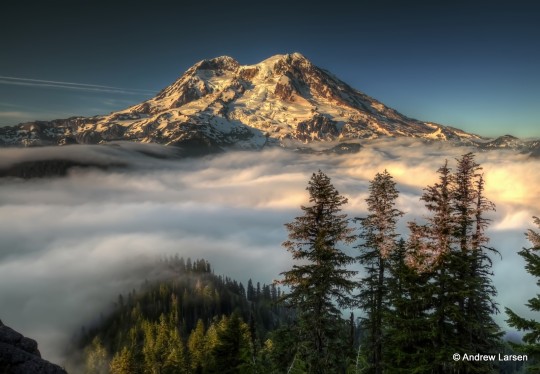
Mount Rainier
Dominating the skyline of Seattle stands the highest peak (4392 m/14411 ft) in the Cascade Mountain Range, Mount Rainier. Along with other notable volcanoes in the Cascades, Mount Rainier formed as a result of subduction along the Cascadia subduction zone, where melting and crustal contamination generates a high silica, high water content magma. This magma composition presents at the surface in a very particular way; large stratovolcanoes with the potential for large, explosive eruptions.
Located on the leading edge of the Cascades, Mount Rainier is located just 87 km/54 miles to the south-east of Seattle. Parts of the city of 634,535 people, as well as the city of Tacoma (202,010 people) and surrounding towns are built on ash and lahar deposits from Rainier.
Along with the 20 or so major stratovolcanoes in the Cascade Arc, Rainier is capable of large, explosive eruptions similar to that of Mount St Helens in 1980. The geologic record shows that continuous eruptions have been occurring at Rainier for 500,000 years, fluctuating between periods of higher and lower eruption rates (We are in the latter).
The eruptions themselves however, are not the only, nor the biggest threat the volcano poses. The mountain is home to 26 major glaciers which feed several rivers (Cowlitz, Nisqually, Puyallup, Carbon and White) that during an eruption would be vulnerable to lahars created by the sudden release of glacial meltwater. The USGS estimates that 150,000 people live on top of past lahar deposits from Rainier, including areas of Seattle and nearby Tacoma.
Hydrothermal alteration on the mountain is also of concern. A mixture of magmatic fluids, hydrothermal fluids, and steam have acted to chemically alter the volcanic rocks, making them weaker in the process. Widespread alteration on the steep sided flanks of Rainier makes them vulnerable to collapse, a process evident in the geological record. Approximately 5,600 years ago, 2-3 km^3 of mostly altered material from the summit and N-E flank detached from the mountain, creating a lahar that reached as far as the Puget Sound. This event, known as the Osceola Mudflow, created a horseshoe shaped crater not unlike that created after Mt St Helens erupted, which has since refilled with later lavas. Most of the heavily altered rock from the volcano was removed in this event, but some does remain on the upper west flank and presents a collapse hazard. These flank failure events can prove particularly hazardous as they do not necessarily require volcanic or seismic activity to occur; instead failing due to their own structural weakness.
There are no current signs of renewed activity at Mount Rainier, which is heavily monitored for any activity that suggests the contrary. Rainier has not had a major eruption in recent times, but its eventual awakening will no doubt make headline news worldwide.
USGS: Mount Rainier - http://on.doi.gov/PctRUI
Hydrothermal Alteration on Rainier - John, D. A., Sisson, T. W., Breit, G. N., Rye, R. O., & Vallance, J. W. (2008). Characteristics, extent and origin of hydrothermal alteration at Mount Rainier Volcano, Cascades Arc, USA: Implications for debris-flow hazards and mineral deposits. Journal of Volcanology and Geothermal Research, 175(3), 289-314. - http://bit.ly/1hdKn4Q
The Osceola Mudflow - Vallance, J. W., & Scott, K. M. (1997). The Osceola Mudflow from Mount Rainier: Sedimentology and hazard implications of a huge clay-rich debris flow. Geological Society of America Bulletin, 109(2), 143-163. - http://bit.ly/1KKcmWy
Deep magma reservoir below Mt Rainier - http://on.fb.me/1IECxvm
Image Credits - Andrew E. Larsen - http://bit.ly/1OY1nrh, Poyson - http://bit.ly/1Hj5zvd, Hazard Map - USGS http://on.doi.gov/1JG1p6W
RJW
#mount rainier#science#volcano#lahar#geology#hazard#volcanomonday#washington#pnw#tacoma#the earth story
102 notes
·
View notes
Text
A stronger electricity grid is crucial to cutting carbon. Does that make it green?
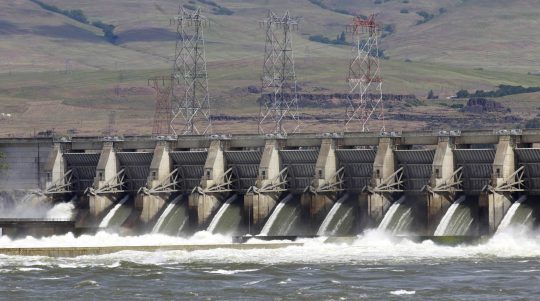

This story is part of the series Getting to Zero: Decarbonizing Cascadia, which explores the path to low-carbon energy for British Columbia, Washington, and Oregon. This project is produced in partnership with InvestigateWest and other media outlets and is supported in part by the Fund for Investigative Journalism.
Can slicing a 100-mile-long trench into the bed of the Columbia River — the iconic giant whose flow binds British Columbia, Washington and Oregon — be good for the environment? The answer is a big yes, says a team of energy developers that proposes submerging power cables in the riverbed.
The developers say the submerged cables could deliver “clean” energy that will be crucial for getting the most densely developed areas of Cascadia off fossil fuels.
A proposal by renewable energy developer Sun2o Partners and transmission developer PowerBridge would insert the cables into the Columbia at The Dalles in Oregon. This electrical on-ramp is near the towering wind farms and expansive solar farms installed along the Columbia Gorge in eastern Oregon and Washington.
The cables also would intersect and plug into the monster transmission lines at the Bonneville Power Administration’s Big Eddy substation, drawing cheaper solar power from the Southwest, steadier wind power from Montana and Wyoming, and reliable backup power from British Columbia’s supersized hydropower reservoirs.
But even climate-conscious developers can’t make plans involving a natural resource like the Columbia River without causing uneasiness among those concerned with ecosystems and communities. Along the Columbia, those affected would include tribal nations and unique cultural interests.
Regulators and environmentalists are likely to find themselves caught in the middle — wanting environmental justice for tribal nations, as well as limits to the impacts of energy projects on ecosystems, yet also eagerly seeking rapid action on projects designed to slow climate change.

Wind etches the Columbia River’s surface downstream of Squally Point, at right in the distance. Around the bend lies The Dalles, where Cascade Renewable Transmission partners propose to start laying power cables in the riverbed. The cables would deliver enough renewable energy to Portland to power nearly 1 million homes.
Photo: Leah Nash
Sun2o and PowerBridge propose to bring their cables ashore in Portland, helping to electrify industries, buildings and vehicles while reducing the use of coal- and gas-fired power plants. Hence the project’s name: Cascade Renewable Transmission.
“The only places you can site solar and wind at scale are, for the most part, east of the Cascades. But the demand, the need for the electricity, is in Portland and Seattle, on the west side,” says Corey Kupersmith, the New York–based renewable energy developer who cofounded Sun2o and dreamed up the cable scheme. And existing power lines that link east and west are filling up fast, he says.
Anticipating environmental concerns, the developers assert they will do little harm to the Columbia, employing high-pressure pumps that make underwater cable installation quick and not so dirty. Powerful water jets would shoot down from a “hydroplow” towed along the Columbia riverbed, stirring open an 18-inch-wide trench in the sediment, while operators on the ship observe and make adjustments. A bundle of cable, unspooling as the plow moves, would slip into the trench and be buried as fluidized sediment settles back down.
Environmental impacts, they argue, would likely be short-term and outweighed by anticipated environmental gains: reductions in pollution from natural gas, petroleum fuels and coal. That includes emissions of carbon dioxide and methane, two of the greenhouse gases that are supercharging Cascadia’s wildfires and heat waves and disrupting even the mighty Columbia’s temperature and timing.
To Elaine Harvey, however, the Cascade Renewable Transmission pitch sounds like one more industrial enterprise in a seemingly endless stream of projects that have harmed her people. Such ventures have decimated the Columbia River’s fisheries and fenced off and degraded the shrub-steppe grasslands that the Yakama and other tribes and bands ceded in an 1855 treaty with the United States.
A member of the Yakama’s Kah-milt-pa, or Rock Creek, Band, Harvey lives with the legacy of dams, aluminum production, wind farms, expanding solar plants and other development. Each has infringed her people’s right to pursue their traditional practices.
As Harvey and Kah-milt-pa Chief Bronsco Jim Jr. wrote earlier this year in the quarterly newsletter of Columbia Riverkeeper: “Ours is a living culture, and we are being cheated by progress. An unrelenting cultural extinction in the name of energy development.”
The Cascade link is one of several power lines proposed or under construction in Washington, Oregon and British Columbia. And those are part of a larger trend across the United States and Canada, and around the world.
Power-system experts say the grid that has sufficed in the fossil-fuel era must increase capacity if renewable electricity is to become the lifeblood of economies. Most regional and national decarbonization studies identify beefier grids that share power over longer distances as a precondition to weaning economies off fossil fuels.
Wind blows and sunlight shines most reliably in places that are sparsely populated — areas with weak power lines. Stronger grids, in contrast, enable more power to travel between regions, so those areas can help each other out — precisely what Texas couldn’t do when a deep freeze brought the state to its knees in February and when heat strained its grid last month.
To explore the role of power transmission and the tradeoffs involved in grid expansion, InvestigateWest spoke with Kupersmith, Harvey and Lauren Goldberg, the legal and program director for Columbia Riverkeeper.
Corey Kupersmith: Renewable energy developer
An early passion for diving exposed Corey Kupersmith to coral bleaching resulting from water pollution and global warming. An engineer by training and a banker by trade, Kupersmith cofounded New York City–based Sun2o with a colleague five years ago as a business venture that honors his environmental values. “We only work on projects that reduce emissions and create a positive impact,” says Kupersmith.
Pursuing solar energy projects in sun-soaked eastern Oregon and Washington inspired him to propose the Cascade link project. Sun2o found plenty of landowners and rural communities eager to host arrays of solar panels. But it struggled to secure affordable space on power lines so it could send that energy to the utilities in greatest need of renewable energy. Those include Puget Sound Energy, the investor-owned firm that serves northwestern Washington, and Portland General Electric, Oregon’s largest investor-owned utility.
Instead, Sun2o is moving forward with smaller projects in eastern Washington and Idaho, serving utilities east of the coastal mountains, such as Spokane-based Avista Utilities.

Corey Kupersmith says the grid must expand fast to deliver the renewable electricity that Oregon and Washington needs to decarbonize. He bets that burying cables out of sight in the Columbia’s riverbed will skirt ‘not-in-my-backyard’ community opposition that delays or blocks new overhead power lines.
Photo provided by Kupersmith
Moving power west over the Cascades means getting access to the Bonneville Power Administration’s (BPA) regional network, the U.S. Northwest’s transmission backbone. That network is maxing out as a wave of renewable power projects plug in, along with the battery plants needed to store and release power to help keep grid supply and demand in balance. “BPA has like 28 gigawatts of solar, wind and storage requests,” says Kupersmith. “That’s going to be pushing systems to their limits.”
And that was before Oregon passed one of North America’s most aggressive grid decarbonization plans. The June bill, which Gov. Kate Brown is expected to sign into law this month, requires Oregon’s investor-owned utilities to deliver 80% carbon-free power by 2030, compared to less than 50% today. It mandates 100% carbon-free electricity by 2040 — five years ahead of deadlines set by Washington state and California.
Bonneville itself is in a tough spot. The federal entity is being financially stretched by rising costs to maintain aging dams and improve impacted salmon fisheries and decreasing revenues due to falling power prices and customers defecting to cheaper suppliers.
Hitting a transmission barrier in his own developments inspired Kupersmith to propose the Cascade cables. He knew putting them in the riverbed was an option, because PowerBridge had installed two transmission lines in the Hudson River near Manhattan to ease power bottlenecks in New York City and on Long Island. And he saw a submerged cable as an end-run around opposition to overhead lines that has scuppered previous grid expansion efforts in Cascadia and frequently ties up projects across the continent. Overhead lines have drawn the ire of both communities and conservationists.
Kupersmith’s partner at PowerBridge, Chris Hocker, its vice president of planning, calls overhead lines “hideously problematic,” noting that they can take a decade or more to build. In contrast, he and Kupersmith anticipate their cables in the Columbia would begin pumping electricity through the Columbia in just five years — lightning speed for new transmission.
Of course, that depends on government and community approval. The partners have requested studies of the project’s necessity from Portland General Electric as well as Northern Grid, an alliance of Northwest utilities that coordinates regional transmission planning.
And the partners recently have begun conversations with the four tribes that have treaty rights in the region, including the Yakama Nation and the Cowlitz Indian Tribe. Kupersmith says they had hoped to start meeting earlier but were delayed by the pandemic and a desire to conduct the consultations in person.
Elaine Harvey: Kah-milt-pa activist
For Elaine Harvey, a power line in the Columbia heading west from The Dalles would be yet another to add to a pile of damaging energy developments taking place over decades. One of the most devastating was the 1957 completion of The Dalles Dam — one of 14 major dams on the Columbia’s main stem responsible for generating more than half of the Northwest states’ power – and decimating the world’s largest fishery.
The Dalles Dam energized the associated Big Eddy substation, where Kupersmith and his partners hope to plug into BPA’s regional grid, and which has its own painful associations for local tribes.
The Dalles Dam’s 200-foot-high barrier submerged the storied Celilo Falls, where daring dip netters once caught leaping salmon and steelhead. The dam also submerged a complex of villages nearby, which had been a gathering point for traders from tribes across the Northwest. Prior to the dam, it was North America’s oldest site of continuous human habitation.
And power lines running 7 miles from Big Eddy to Chenoweth, just west of The Dalles, pass over an Indigenous burial site.
Emotions from those historic insults and numerous other losses remain fresh more than half a century later, as Indigenous communities continue to grapple with a settler culture that often seems incapable of hearing their concerns.
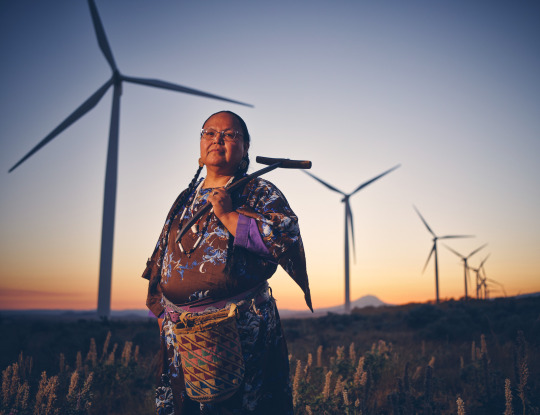
Standing before a row of the more than 2,900 industrial-scale wind turbines that tap the gales funneling through the Columbia River Gorge, Elaine Harvey poses for a portrait holding a ka’pin, a traditional tool for digging edible and medicinal roots. The turbines supply low-carbon electricity, but Harvey says they’ve also brought fences and ‘no trespassing’ signs to her band’s traditional lands, excluding her people from native plant harvesting areas. At this location, there is only one landowner who allows her band to gather foods for ceremonial and subsistence purposes.
Photo: Leah Nash
Harvey sees that inability manifested in another proposed grid reinforcement project that she’s fighting, just upstream from The Dalles. The Goldendale Energy Storage Project would build a pair of 60-acre reservoirs, one alongside the river and one on a bluff above. By moving Columbia River water between the reservoirs, the project would store and discharge energy like a giant battery.
The project faces vocal opposition from the Yakama Nation, to whom the site is profoundly sacred. Yakama stories recall the bluffs as a haven during great floods in millennia past, and Harvey says her band still forages there for culturally important “first foods,” such as desert parsley.
They already have lost much access to foraging sites because of wind farms, which have fenced off large areas. Only one landowner hosting a wind farm in the area allows Harvey’s people to enter and gather traditional plants, she says. Meanwhile, explosive solar development threatens to kill native plant habitat, she says, unless consultation improves between developers, government agencies and tribes.
Recently, there have been instances of better consultation. For example, at the urging of the Yakama, BPA adjusted the route of a short transmission line added to Big Eddy in 2015. In contrast, Harvey points to Washington Gov. Jay Inslee’s line-item veto that removed a requirement for the state to consult with tribes on environmentally sensitive projects — a requirement legislators had included in the state’s recently passed carbon cap-and-trade law.
Harvey asks whether the onslaught of development in the Columbia Gorge is necessary. She questions whom the projects are really intended to benefit, noting with suspicion the express line running between BPA’s Big Eddy hub and Los Angeles.
The express line and others were built in the 1960s to help power California. In the future, excess solar power could flow north when the sun is up. But today, the lines’ primary use remains the shipment of hydropower from the Columbia River dams and British Columbia south to California.
Harvey wants to know where development will stop. “What I’m concerned about is: What is this going to lead to? Is this going to lead to wind [turbines] down the middle of the river? What’s down the line?”
Climate change also worries Harvey. A biologist by training, she knows that warmer water represents a growing threat to the Columbia’s struggling fisheries, including bottom-feeding suckerfish and sturgeon.
Harvey thinks other solutions need to be considered. Solar and wind farms are not the only ways to cut carbon pollution, she says. Gas-fired power plants can be equipped to capture the CO2 they produce. Smarter logging practices and coastal protections can boost the ability of inland forests and kelp forests to capture atmospheric CO2. Rooftop solar panels can generate power where it’s needed most.
Bottom line, says Harvey: “We already gave up enough.”
Lauren Goldberg: River defender and lawyer
For Lauren Goldberg, projects like the proposed Cascade cables can present an acute challenge. Goldberg, a 15-year veteran at Columbia Riverkeeper, sees fossil fuels and climate change as existential threats to the river and the communities that rely on it. This is a reason Riverkeeper has been a mainstay in the “Thin Green Line” movement that has blocked many efforts to push more coal, oil and liquefied natural gas down the rail lines transiting the Gorge.
And it’s why it has advocated for more clean energy production. “The Columbia River is already being impacted by the climate crisis, and the projections are dire,” says Goldberg.
Goldberg says a lot of green energy development has happened in the Columbia Basin, and she expects that will continue. But that does not mean every project that calls itself renewable and green gets a pass.
Cascade Renewable Transmission’s proponents, says Goldberg, must first prove that their project lives up to its name. “One of our core questions is ‘What power is this moving?’”

Lauren Goldberg says the Columbia Riverkeeper sees an ongoing risk of new power lines enabling expanded gas-fired generation in Cascadia, in spite of the region’s ambitious carbon-cutting mandates. She says Oregon’s new power sector decarbonization law, for example, does not preclude construction of new gas plants to power industries such as Bitcoin ‘mines.’
Photo: Leah Nash
Goldberg notes that energy developers want to build a new gas-fired power plant, dubbed the Perennial Wind Chaser, east of The Dalles. They have secured a site certificate from Oregon. And gas developments have been endorsed by some energy experts who see generators burning a fossil fuel such as gas today, then transitioning to a cleaner fuel, such as renewable hydrogen as a crucial source of backup power.
Proponents of the Cascade link say they have no relationship with individual power projects, and that the utility planners are evaluating what role their project would play in meeting the region’s clean energy policy goals.
Even if the power cables are deemed important for the energy transition, for Goldberg their carbon-cutting potential must outweigh their direct environmental impacts.
“We’ve got a lot of questions and a lot of concerns. Whether it’s renewable energy or fossil energy, we need to understand how a project is going to impact people that rely on the Columbia for salmon and for clean water,” says Goldberg.
Goldberg stresses that burying 100-mile-long power cables in the riverbed is a concept that Riverkeeper hasn’t grappled with before. And the project’s proponents have yet to file permit applications or environmental impact studies, so her organization doesn’t have the data needed to make an informed decision on whether to back or oppose it.
Based on experience and some preliminary research, however, Goldberg identifies several issues they’ll be looking for. One is the impact from stirring up sediment. She says that while the Columbia is “incredibly beautiful,” it’s by no means “pristine.” In certain parts of the river, sediments are contaminated with PCBs and other toxic pollution — a challenge Kupersmith and Hocker expect to manage by tweaking the cables’ route through the riverbed or even bringing them ashore to bypass certain river segments.
Another potential impact mentioned by Goldberg could come from the electromagnetic fields generated by power cables.Research commissioned by the federal Bureau of Ocean Energy Management looked at magnetic fields emanating from similar transmission cables laid across San Francisco Bay. Those cables helped reduce San Francisco’s dependence on gas-fired power plants.
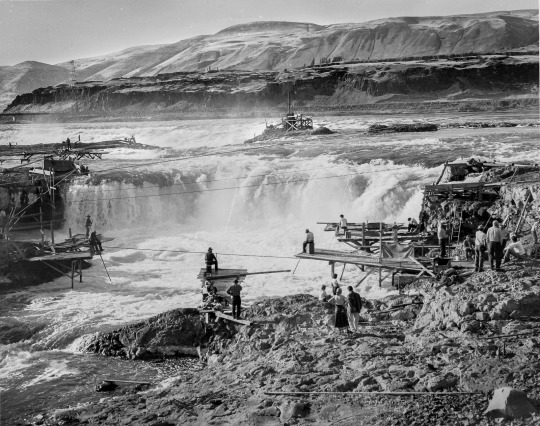
Celilo Falls and its surroundings were continuously inhabited for over 10,000 years. Prior to colonization, the area served as a trading hub for Indigenous communities across western North America. Abundant salmon, steelhead and other fish caught via dip-netting and weirs brought great wealth until the Dalles Dam drowned the falls and adjacent villages in 1957.
Photo: Gladys Seufert via the Oregon Historical Society
The study found that the cables had some effects on migratory fish like salmon, which navigate partly by sensing Earth’s magnetic fields. For example, the cables increased the chance that salmon smolts would take a wrong turn that lengthened their journey to the ocean. But it detected no evidence that fish were harmed. Fish appeared to be just as successful at migrating through the bay after the cables were turned on.
Columbia Riverkeeper’s sister organization in New York, which focuses on the Hudson River, evaluated the direct impacts likely to result from PowerBridge’s cable projects there and concluded that delivering cleaner power made it worth the risk. It also backed a much longer submerged cable proposed to bring hydropower from Quebec down the Hudson, but the Ossining, NY-based Riverkeeper recently reversed course on that project. What turned the tide: It concluded the project might encourage provincial utility Hydro-Québec to build additional dams — development that’s opposed by the local First Nations.
Goldberg says the “lengthy history of disproportionate impact of renewable energy on tribal nations” was part of what led Columbia Riverkeeper to oppose the Goldendale Energy Storage Project.
She says the developer came in with “heavy green-energy branding,” but that didn’t make it “clean” from a broader environmental and social justice perspective. Ultimately, the group decided to “work in solidarity with the tribes” to stop that project.
Gov. Inslee has backed the Goldendale project, but last month Washington’s Department of Ecology denied Goldendale a crucial water permit, saying it needed to know more about its impacts on wetlands, streams and groundwater. An equally crucial licensing decision by the Federal Energy Regulatory Commission is pending and could land any day.
This story was originally published by Livescience.Tech with the headline A stronger electricity grid is crucial to cutting carbon. Does that make it green? on Jul 24, 2021.
New post published on: https://livescience.tech/2021/07/24/a-stronger-electricity-grid-is-crucial-to-cutting-carbon-does-that-make-it-green/
2 notes
·
View notes